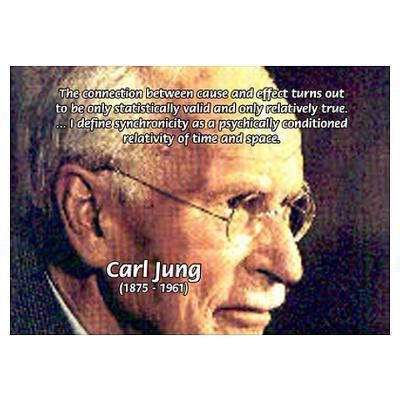Synchronicity was one of Jung’s most profound yet least understood discoveries, in part because it cannot be appreciated until we personally step into and experience the synchronistic realm for ourselves. Jung’s discovery of synchronicity was in a sense the parallel in the realm of psychology to Einstein’s discovery of the law of relativity in physics. Because it is so radically discontinuous with our conventional notions of the nature of reality, the experience of synchronicity is so literally mind-blowing that Jung contemplated this phenomenon for over twenty years before he published his thinking about it.
Jung’s synchronistic universe was a new world view which embraced linear causality while simultaneously transcending it. A synchronistic universe balances and complements the mechanistic world of linear causality with a realm that is outside of space, time and causality. In a synchronicity, two heterogeneous world-systems, the causal and acausal, interlock and interpenetrate each other for a moment in time, which is both an expression of while creating in the field an aspect of our wholeness to manifest. The synchronistic universe is beginning-less in that we are participating in its creation right now, which is why Jung calls it “an act of creation in time.”
by Paul Levy
Via ddrrnt



 Your new post is loading...
Your new post is loading...







